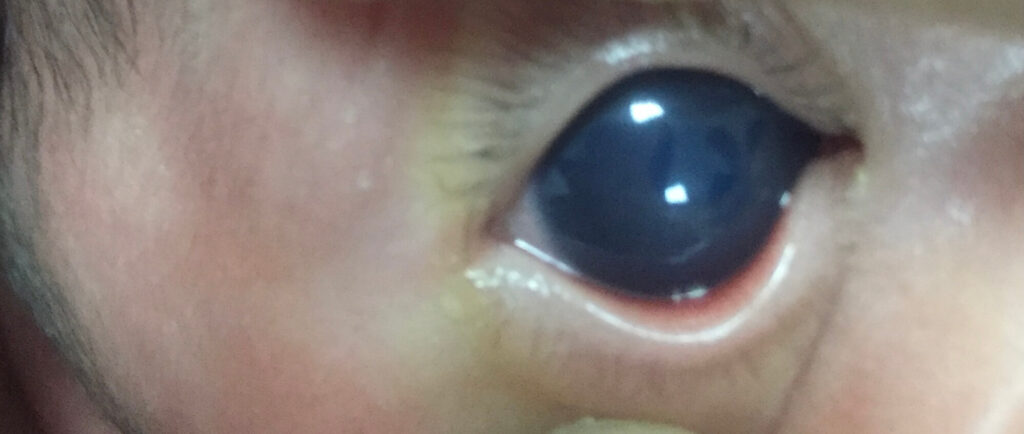
Glaucomas of childhood include primary congenital as well as juvenile glaucoma. Primary congenital glaucoma affects the child from birth or early development. Juvenile glaucoma is usually diagnosed after the age of 3 or as a young adult.
Overall, the congenital glaucomas are rare, occurring in about 1 out of 10,000 infants. Approximately 60% of congenital glaucoma are found before 6 months of age and 80% before age 1.
In congenital glaucoma, the intraocular pressure is elevated typically due an abnormal drainage system (the trabecular meshwork). In about half of babies born with congenital glaucoma there are no other abnormalities in the eye or elsewhere in the body. This type of childhood glaucoma is called primary congenital glaucoma. The other half of babies, there are abnormalities present either in the eye or body. Congenital glaucoma typically occurs in babies of healthy parents without a history of glaucoma and hence is not inherited.
Diagnosing Congenital Glaucoma
Diagnoses of congenital glaucoma is typically done based on how the baby is acting and examination. This is typically a team effort between the parents, pediatrician, and a pediatric ophthalmologist.
Signs that a baby has glaucoma includes an enlarged eye (buphthalmos), cloudy cornea or a baby that has difficulty tracking parents or interesting objections. Babies often develop a classic triad of symptoms that include photophobia (light sensitivity), epiphora (tearing) and blepharospasm (eyelid twitching).
Treatment for congenital Glaucoma
While in adults, glaucoma treatments typically start with medications, in congenital glaucoma, eye surgery is typically performed. In glaucomas that develop after the 6 months, surgery can be successful in controlling the eye pressure. The most common types of procedures include goniotomy and trabeculotomy, both which targets opening the poorly functioning drainage system.
The prognosis for vision is varied, most babies with congenital glaucoma maintain some degree of vision. Although we do not typically treat newly diagnosed pediatric glaucoma patients, the physicians of Michigan Glaucoma & Cataract work to take over the care these patients when they are adolescents and young adults.

